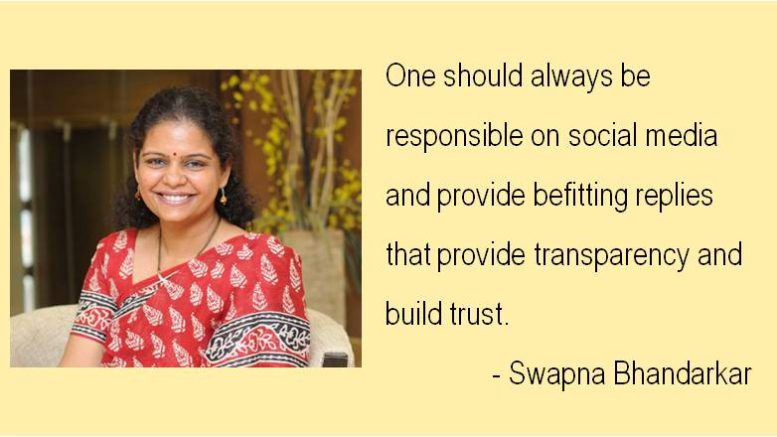The pen is mightier than the sword, goes an old adage. But in today’s social media age, the smartphone clearly makes the cut. Be it natural disasters, oil spills, product failures or even unsatisfactory services, technical glitches to corporate accounts being hacked are all the new-age crises being played out via social media, with citizen journalists capturing smartphone video footage and tweeting events as they unfold.
A tweet, a post, an Instagram can be virtually more damaging then their nondescript predecessors where customers would ‘post letters’ to consumer departments and news editors and wait for some action. Social media has created a platform for people to interact, engage and inform like-minded people around the world about issues that they deem relevant. While in the past, a couple of calls from journalists would have got our attention, today companies can be caught in the eye of a virtual storm on the internet. Clearly one can no longer afford to be an ostrich with its head buried in their laptops while the world goes viral on your company.
And if that isn’t bad enough, innocuous posts by staff, disgruntled employees, and unhappy vendors all can spiral into a communication crisis.
Social-Mediated Crisis Communication (SMCC) Model, an interesting study published by Lucinda Austin, Brooke Liu, and Yan Jin explores how audiences seek information from social and traditional media, and what factors affect media use during crises. Using the SMCC model, an examination of crisis information and sources reveals that:
- Audiences use social media during crises for insider information and checking in with family/friends and use traditional media for educational purposes.
- Convenience, involvement, and personal recommendations encourage social and traditional media use; information overload discourages use of both.
- Humour and attitudes about the purpose of social media discourage use of social media, while credibility encourages traditional media use.
Practically, findings stressed the importance of third-party influence in crisis communication and the need for using both traditional and social media in crisis response.
So here are a few quick tips for going social during a crisis:
- Identify the real crisis: Many a times people bait you on social media. Identify the true nature of the crisis. Respond only if you find merit in it being genuine. In case of someone baiting you, it is best not to respond.
- Expedite your response : In case it is genuine, don’t wait and pray for it to disappear in the long list of Google searches. So, anticipate issues, do your homework and keep few prepared responses ready.
- Be responsible: Do not argue on social media. Be responsible and provide befitting replies that build transparency and trust.
- Monitor: Use monitoring tools to identify potential crises based on news articles or blog posts or rumblings among customers.
- Tweet influencers: Traditional media is the best influencer in times of crisis. Reach out to reporters via Twitter, make sure you are following them so you can engage in conversations regarding your crisis. Always return a reporter’s tweet or direct message, even if the response is “I have no new information and am still working on answers for you.” But do not provide any unauthorised information.
- Plan: Like in the case of traditional media, have a plan in place. In fact, one can even conduct ‘drills’ to gauge the preparedness.
Remember, a web whisper can always end up as a sound byte on news hour. But a well prepared plan can help organisations sail through the worst crisis.







Very relevant article in today’s time. A must read article for those who are in the communications industry.